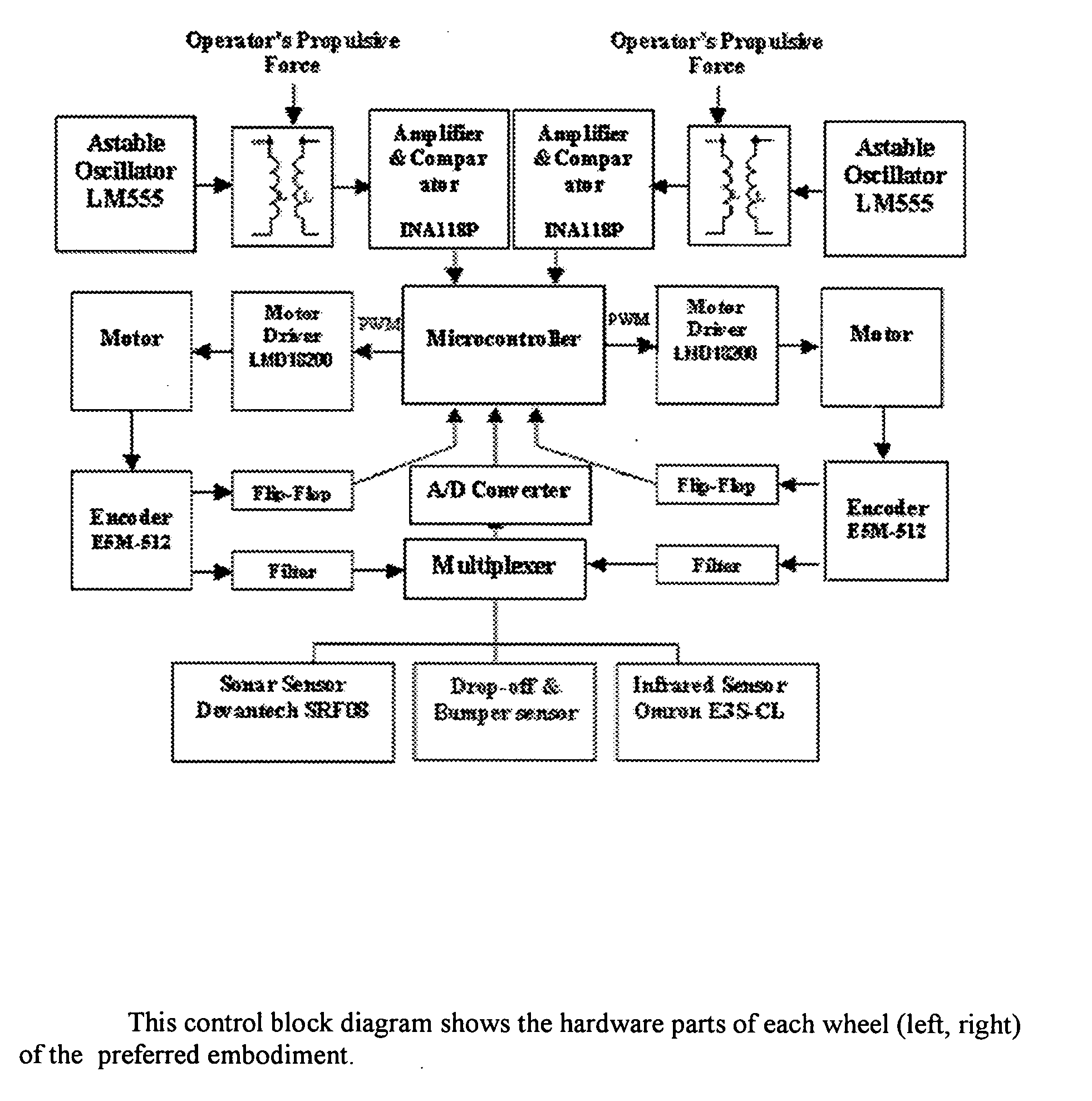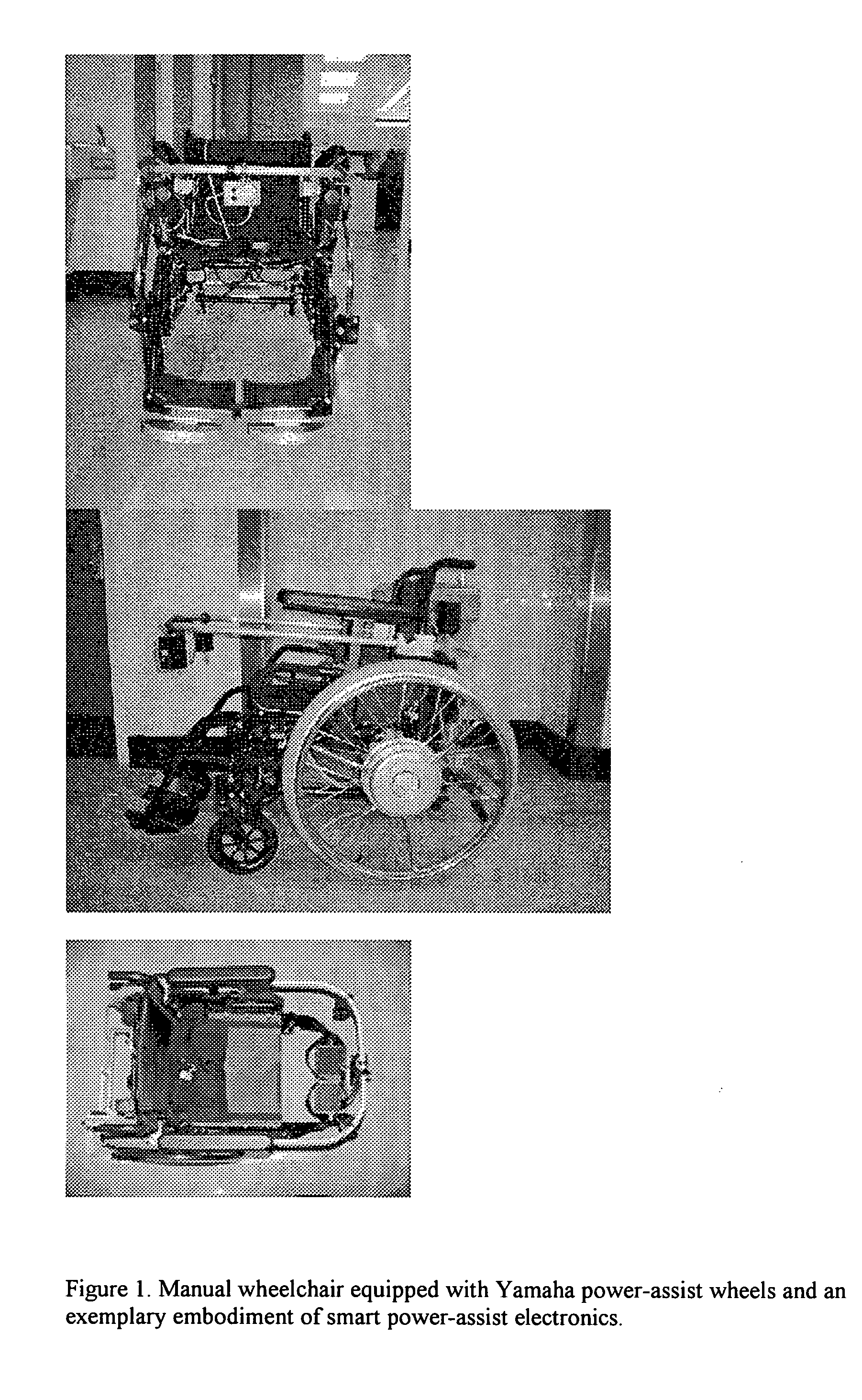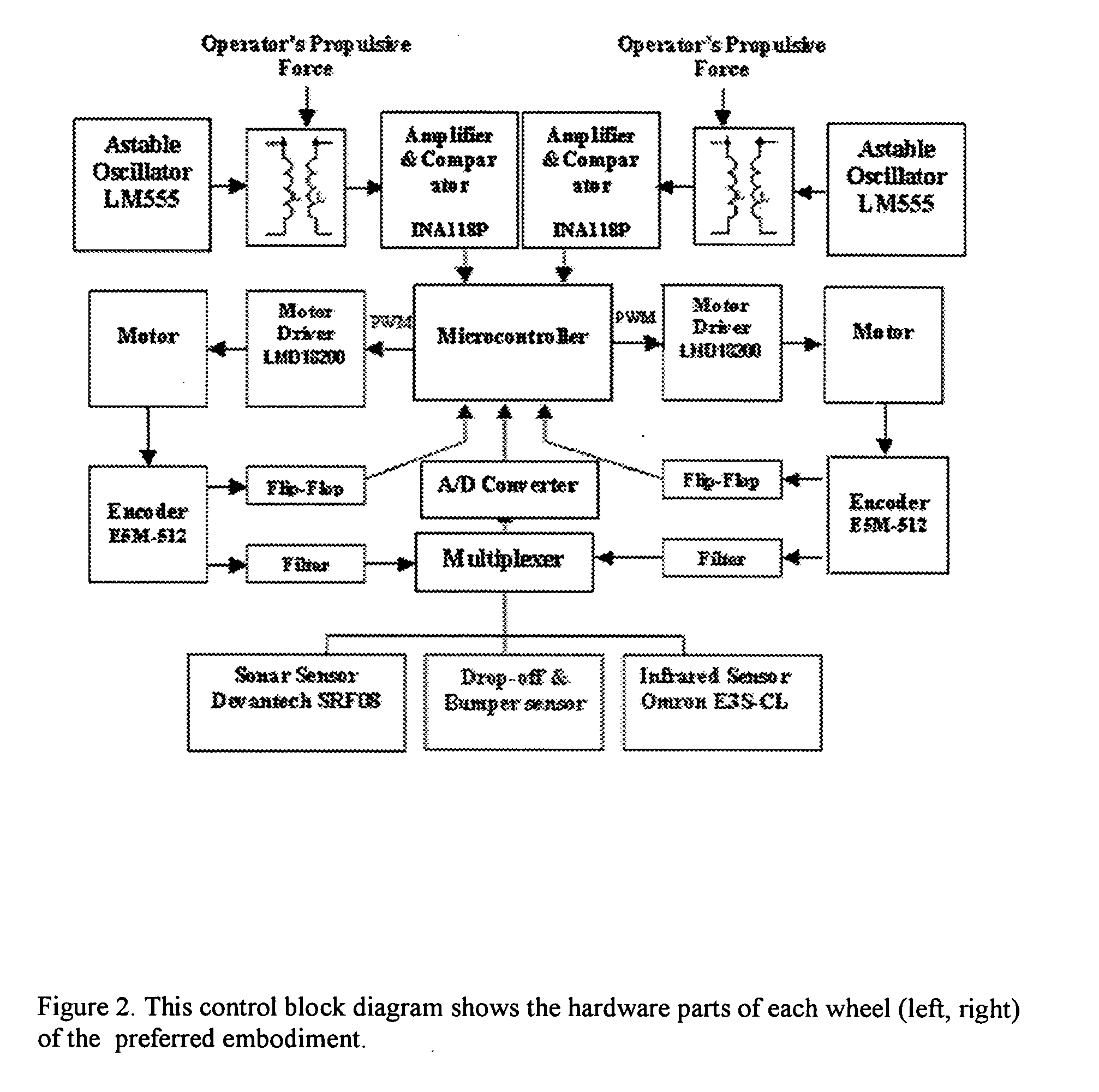Power apparatus for wheelchairs
a technology for power apparatus and wheelchair, which is applied in the field of mobility devices, can solve the problems of only being compatible with permobil wheelchairs, systems that are not adaptable to manual wheel chairs with power assist components, and increasing the risk of accidents, etc., and achieve the effect of increasing the force applied
- Summary
- Abstract
- Description
- Claims
- Application Information
AI Technical Summary
Benefits of technology
Problems solved by technology
Method used
Image
Examples
Embodiment Construction
[0026] An embodiment of the present invention is shown in FIG. 1 mounted on a commercially available manual wheelchair frame. This embodiment uses the instrumented pushrims of a commercially available power-assist wheelchair hub to sense the propulsive force applied to each rear wheel of the wheelchair. The instrumented pushrims measure these propulsive forces using linear compression springs and a simple potentiometer that senses the relative motion between the pushrim and the hub. The pushrim signals are provided to the system's control electronics, which are based upon an electronic board interfaced to a custom printed circuit board design. In a preferred embodiment, this microprocessor is substituted for the microprocessor which typically coordinates the power-assist hubs. The microprocessor controls a permanent magnet direct-current motor attached to each rear wheel. The control signal provided to the motor by the microprocessor is determined by the signals received from the pu...
PUM
 Login to View More
Login to View More Abstract
Description
Claims
Application Information
 Login to View More
Login to View More - R&D
- Intellectual Property
- Life Sciences
- Materials
- Tech Scout
- Unparalleled Data Quality
- Higher Quality Content
- 60% Fewer Hallucinations
Browse by: Latest US Patents, China's latest patents, Technical Efficacy Thesaurus, Application Domain, Technology Topic, Popular Technical Reports.
© 2025 PatSnap. All rights reserved.Legal|Privacy policy|Modern Slavery Act Transparency Statement|Sitemap|About US| Contact US: help@patsnap.com



